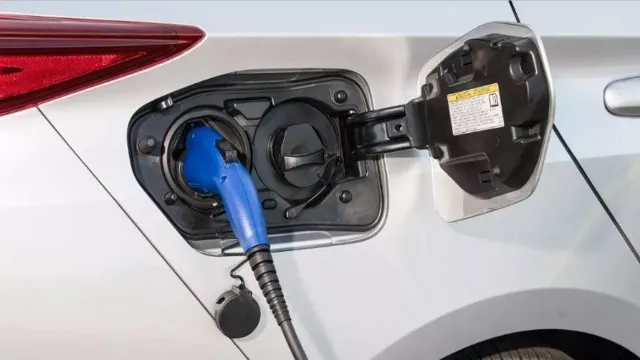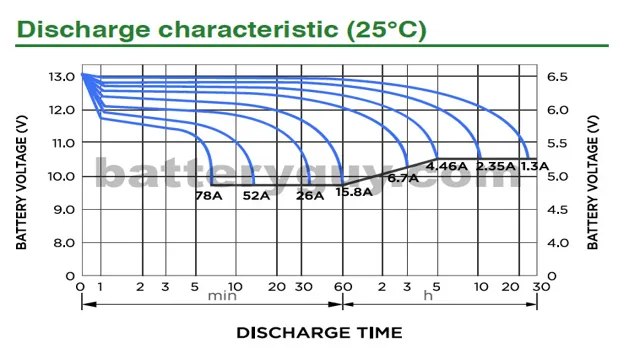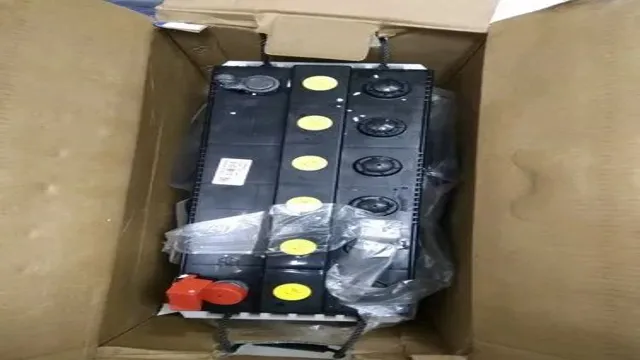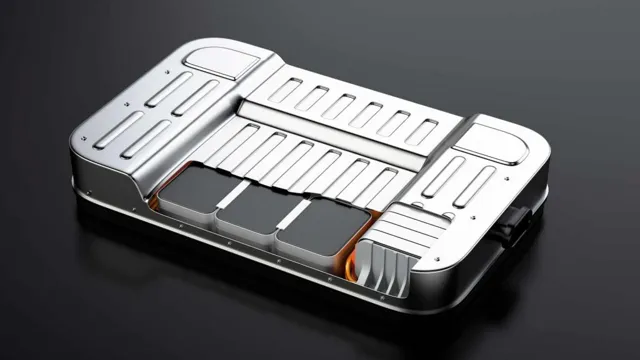Revolutionizing Sustainable Transportation with Electric Flow Batteries – The Future is Here!
Do you ever wish that you could drive your electric car without worrying about running out of battery? Well, now that might be possible with the electric car flow battery. This innovative technology offers a promising solution for electric vehicles by providing a continuous flow of charged electrolytes to power the car, rather than relying on rechargeable batteries that need to be replaced or charged periodically. Think of it like a gas station for electric cars.
You simply pull over, have the battery refueled, and keep on driving. No more waiting hours to charge your car or running out of juice halfway through your journey. Sounds pretty convenient, right? But how does the electric car flow battery actually work? Essentially, it involves two tanks of liquid electrolytes that flow through a membrane and complete an electrical circuit to power the car.
This means that the battery can run indefinitely, as long as there is a continuous supply of electrolytes. While still in the early stages of development, electric car flow batteries have the potential to revolutionize the electric vehicle industry and make it more accessible and convenient for everyday use. Who knows, maybe one day we’ll see electric cars with flow batteries on every street corner.
What is a flow battery?
Electric cars have been ruling the automotive world for quite some time, but with that has come an increased demand for power sources that can efficiently keep them on the road. This is where flow batteries come into play. A flow battery works by setting two electrolytes – one negative and one positive – flowing across a membrane, with a charge stored in each.
When these electrolytes meet, a reaction occurs that generates electrons, creating electricity to power the car. Unlike traditional batteries, flow batteries can provide longer-lasting, consistent power because they have the potential to swap out fresh electrolytes during “refueling” rather than needing to recharge like conventional lithium-ion batteries. Electric car flow batteries are currently in development by multiple automobile companies and look to be a promising alternative to traditional batteries.
Definition and Components
A flow battery is a type of rechargeable battery that relies on two chemical components to store and release energy. Unlike traditional batteries, flow batteries use external tanks to hold the necessary electrolytes, which flow through a membrane to generate electricity. One of the major benefits of flow batteries is their scalability – the amount of stored energy can be easily adjusted by simply increasing or decreasing the size of the external tanks.
Another advantage is their longevity, as the battery can be cycled indefinitely without degradation. The technology is commonly used in large-scale energy storage systems, where it can help to balance the grid and improve the integration of intermittent renewable energy sources. Overall, flow batteries provide a promising solution for the challenges of energy storage and management in a rapidly changing world.

Pros and Cons Compared to Traditional Batteries
Flow batteries are a type of rechargeable battery that use two liquids, typically separated by a membrane, to generate electrical energy. They are a relatively new technology that is becoming increasingly popular due to their ability to store large amounts of energy for long periods of time without degradation. One major advantage of flow batteries is the ability to scale up or down the energy storage capacity by simply increasing or decreasing the size of the storage tanks.
This makes them ideal for use in renewable energy systems, such as wind turbines or solar panels, where energy storage needs can fluctuate based on weather conditions. Another advantage is that flow batteries have a longer lifespan compared to traditional batteries, as they do not experience the same degradation of electrodes over time. However, flow batteries are still relatively expensive, making them less appealing for use in smaller applications.
Additionally, the liquid electrolytes used in flow batteries are often corrosive, which can be a safety hazard and require proper handling and disposal. Overall, while flow batteries offer some distinct advantages over traditional batteries, they may not be suitable for all applications and require careful consideration before implementation.
How does it work in an electric car?
An electric car flow battery is a rechargeable battery that powers the vehicle’s electric motor. Unlike traditional lithium-ion batteries, which store energy inside the battery cells, flow batteries contain two separate tanks of liquid electrolytes that flow through the battery’s cells to produce electricity. One tank contains a positively charged electrolyte while the other contains a negatively charged electrolyte.
When the battery is charging, the electrolytes are pumped into two separate holding tanks. Then, when the car is in use, the electrolytes are pumped back into the battery and are separated by a membrane. As the positively and negatively charged electrolytes flow through the battery, they react and produce electricity that powers the motor.
One of the unique benefits of flow batteries is that they can be rapidly recharged, making them ideal for use in electric cars. Furthermore, flow batteries can be refilled with fresh electrolyte, which means they could potentially have a longer lifespan than traditional batteries due to the ability to replace the electrolyte. The use of an electric car flow battery is still relatively new, but as technology advances, it may become a more common feature in electric vehicles.
Charging and Discharging Process
The charging and discharging process in an electric car is a crucial aspect of its overall functionality. When an electric car is charging, it takes in electrical energy from an external power source and converts it into chemical energy, which is stored in the battery cells. On the other hand, when the car is in use, the stored chemical energy is converted back into electrical energy and used to power the vehicle’s motor.
The battery management system plays a significant role in ensuring that the battery is charged optimally and not overcharged, which could lead to inefficiencies and shortened battery life. Additionally, regenerative braking helps recharge the battery while the car is in motion by converting kinetic energy into electrical energy and storing it in the battery cells. Overall, the charging and discharging process in an electric car is a complex but crucial process that ensures the vehicle functions efficiently and effectively for a sustainable future.
Energy Efficiency and Performance
Energy efficiency is one of the primary features of an electric car. It refers to the amount of energy that is used to power the car’s motor and move it forward in terms of the distance covered. Unlike gasoline cars where most of the energy released gets lost as heat, electric cars convert about 80% of the energy stored in the battery into usable power to move the car.
With the help of regenerative braking, electric cars can recycle the energy normally lost when braking and store it in the battery for future use, which increases the car’s energy efficiency. Additionally, the design of the electric car including its aerodynamics, weight balance, and power electronics all contribute to improving the car’s performance and energy efficiency. So, if you’re looking for a more energy-efficient car that’s also environmentally friendly, an electric car might be the perfect choice for you.
Environmental Impact
Electric cars have a significantly lower environmental impact compared to gas-powered vehicles. One of the main reasons for this is that electric cars produce zero emissions from the tailpipe. Instead, the emissions are generated by the power plants that produce the electricity needed to charge the car.
However, if the electricity is generated through renewable sources such as wind or solar power, the environmental impact is greatly reduced. Additionally, electric cars require fewer natural resources during production and have lower operating costs compared to gas-powered cars. Overall, electric cars are an excellent option for environmentally conscious individuals who want to reduce their carbon footprint and promote a cleaner, healthier planet.
Benefits of Using a Flow Battery in Electric Cars
Using a flow battery in electric cars has a lot of benefits, not just for the environment but also for the driver. Flow batteries have higher energy densities than traditional lithium-ion batteries, which gives electric cars a longer driving range. This means drivers can go further without having to recharge their vehicle, which is crucial for those who need to travel long distances regularly.
Additionally, flow batteries last longer and require less maintenance. They can also be charged and discharged simultaneously, which allows for faster recharging times and more efficient energy use. This technology is still new and expensive, but as electric cars become more popular, flow batteries may become a feasible alternative to traditional battery packs.
Overall, the use of flow batteries in electric cars is a promising development that could improve the performance and appeal of electric vehicles in the future.
Improved Range and Charging Time
Electric cars have been growing in popularity, but one of the biggest challenges they face is limited range and long charging times. However, using a flow battery in electric cars could help address these issues. By using two liquid electrolytes that are stored in external tanks, flow batteries offer improved range and charging time compared to traditional lithium-ion batteries.
The electrolytes can be easily recharged and exchanged, allowing for quick refueling. This means less time spent waiting for your car to charge and more time spent on the road. Additionally, flow batteries have a longer lifespan than traditional batteries, which means less waste and fewer replacements over the lifetime of your vehicle.
Overall, the benefits of using a flow battery in electric cars are numerous and could help to make electric vehicles more convenient and accessible for everyday use.
Safer and Longer Lasting Battery
Electric cars have come a long way in recent years, and one of the biggest challenges automakers face is ensuring that their batteries are safe and long-lasting. This is where flow batteries come in. Unlike traditional lithium-ion batteries, which rely on a chemical reaction to generate power, flow batteries use two separate liquid electrolytes that circulate through a membrane to produce electricity.
This design offers several benefits for electric cars. First and foremost, flow batteries are much safer than traditional batteries, as they do not use flammable materials that could ignite or explode. Additionally, because flow batteries can be easily refueled and recharged, they offer a longer lifespan than lithium-ion batteries, which tend to degrade over time.
This means that flow batteries could offer a more sustainable and economical solution for powering electric cars in the coming years. So, while flow batteries are not yet widely used in the automotive industry, they certainly hold a lot of promise for the future of electric cars.
The Future of Electric Car Flow Batteries
Electric car flow batteries are being hailed as a new solution to the issue of limited range and long charging times for electric vehicles. These batteries work by pumping electrolyte solutions from external storage tanks into the battery as needed, allowing for longer range without the need for frequent recharging. Experts see this technology as having great potential for the future of electric vehicles, as it would allow for longer drives without having to worry about constantly finding a charging station.
However, there are still challenges to be overcome, such as the cost of the materials used and finding ways to make the battery more efficient. Despite these challenges, electric car flow batteries hold promise for a more sustainable and efficient transportation system.
Conclusion
To sum it up, electric car flow batteries are the bee’s knees! They offer a more sustainable and efficient solution for powering our beloved vehicles. By using liquid electrolytes to generate electricity, these batteries can be recharged on-the-go, drastically reducing the need for cumbersome charging stations. So, here’s to a greener future fueled by the power of flow batteries!”
FAQs
What is an electric car flow battery?
An electric car flow battery is a rechargeable battery in which the electrolyte containing the energy storage material is stored in external tanks and circulated through the cell as needed.
How is an electric car flow battery different from a conventional battery?
Unlike a conventional battery, an electric car flow battery has a higher energy density and longer operating life since the electrolyte can be easily replaced or recharged.
What are the advantages of using an electric car flow battery?
The advantages of using an electric car flow battery include longer operating life, faster charging times, greater energy efficiency, and improved safety as the electrolyte is stored externally rather than within the cell.
Can an electric car flow battery be used in other applications besides electric vehicles?
Yes, electric car flow batteries can also be used in stationary energy storage, renewable energy systems, and backup power systems since they offer high efficiency and long life.





